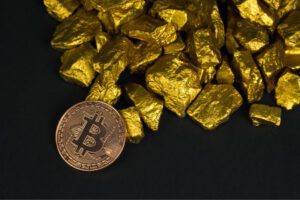
Table of Contents
ToggleA very common concept in the cryptocurrency world is the block reward. This concept refers to a certain amount of cryptocurrencies that miners get for their work in mining. In this article we will tell you all about the block reward and how it works.
Through the block reward it is possible to create each and every one of the cryptocurrencies that make up a blockchain. With this reward, mining becomes an economic system that sustains the network. This is because with each block that is generated, a miner obtains an economic benefit.
The block reward guarantees two essential aspects of the network:
- An economic incentive that allows miners to continue mining blocks and securing the network.
- The introduction of new currencies in the economic system.
Why was the block reward created?
Although block reward is understood as a relatively simple concept, its creation was challenging both technically and computationally. It all comes in the wake of blockchain technology. As we already know, blockchain is a globally distributed database where information is stored in blocks and each block is linked to the previous one.
This way of organizing data ensures security in the network and is achieved through the process of mining. Mining, in a few words, consists of choosing a series of transactions in the network and grouping them into a single block. A hash is then generated that corresponds to the same block.
When Satoshi Nakamoto thought of this system, he believed that one way to streamline the process was for the network to be composed of thousands of computers that streamline the transaction process. However, he ran into another conundrum, how to get miners to devote their resources to mining and maintain the network: the incentive problem. The answer was clearly the Block Reward. This would be compensation for each block generated on the Bitcoin network.
However, the block reward was not only created for this purpose. Satoshi Nakamoto encountered another unknown during the creation of Bitcoin, the issuance of the coins. The idea behind the creation of Bitcoin was always a decentralized system and to this end no one could control any aspect of Bitcoin, including its issuance. This became one of the most important unknowns as an economic system could not be sustained without a controlled issuance of the currency.
After a long search for solutions Satoshi understood that the answer lay in the block reward itself. The system would start by rewarding miners with 50 BTC per block mined, however, this reward would decrease by 50% every 210,000 blocks mined in the network. This process was given the name Halving. If you want to learn more about it, Bitnovo offers a more detailed article.
Doing the math, one block is generated approximately every 10 minutes, which means that 210,000 blocks will be generated every 4 years. The process will be repeated over and over again until the total issuance is approximately 21 million BTC.

How does the block reward work?
The operation of the block reward is a very simple concept if explained step by step:
First, cryptocurrency users issue one or more transactions to the network. These transactions are stored until the validation process begins, where each of these transactions will count with a small amount of commission.
This commission is a micropayment through which the miners are incentivized to give priority to the transaction in order to be verified as soon as possible. Once all the transactions are in, the mining or block generation process begins, where each miner selects a set of transactions waiting to be validated.
The intensity of the mining process is more or less intense depending on the hash function used in the cryptocurrency being worked on. Through this process, what we call Hash will be obtained. This Hash will uniquely and individually identify each mined block.
With the specific Hash found, the miner generates a coinbase transaction where a payment is generated and directed to a wallet controlled by the same miner. The coinbase transaction contains the coins issued for the active block reward. In addition, miners also receive mining fees from each transaction included in the block.
Finally the resolved block is issued to the network so that the nodes can verify the validity of the block. When the nodes reach a consensus on the validity of the block, it is added to the network and the whole process begins again. This controls the issuance of coins and miners receive a reward for each block mined.
If you want to learn more about this Bitcoin consensus mechanism in detail, see our article on What is Proof of Work (PoW)?.

How is the block reward calculated?
Several factors are involved in the calculation of the block reward, such as total cryptocurrency issuance, cryptocurrency generation time, Halving usage, and so on. Below we will look at the most important ones:
Halving
Halving, as we already know, was devised to avoid inflation in a cryptocurrency with limited issuance through decreasing rewards every certain amount of blocks mined in the network. Halving will halve the reward over and over again until total cryptocurrency issuance is reached.
When a halving occurs, the initial value of the reward and the next scheduled decreases are indicated. When the reward decreases, coins are added to the network at a slower rate leading to the revaluation of the coin.
Total issuance of cryptocurrencies
To calculate the block reward a key factor is to know the total issue of the cryptocurrency. The total number is of utmost importance since in order to calculate block reward splits it is necessary to know the total number of coins and how often their reward will be split.
This division has more than one objective since it also seeks the decentralization of the cryptocurrency. This is because with a constant division of rewards it manages to spread the coins in different hands.
Cryptocurrency generation time
Setting the cryptocurrency generation time is a very important parameter. To calculate the block reward of a cryptocurrency we need to know the total number of coins to be mined and the time each block is mined in order to calculate how often the reward will be divided.
To understand this better, we can use the case of Bitcoin as an example. We have 21 million coins of which a block is issued every 10 minutes. With this data we can calculate how often approximately every 10 minutes a Halving will occur and the block reward will decrease.
It should be noted that there are other cases where the currency is unlimited as in Ethereum. However, they usually have a temporarily controlled issuance to avoid devaluation.








